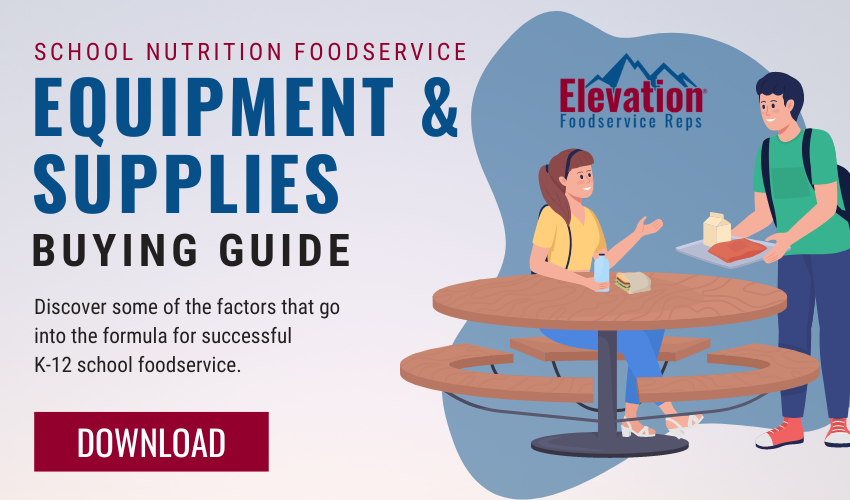ELEVATION NATION BLOG

3 Strategies for Creating School Foodservice Sustainability
Sustainability in school cafeterias is becoming a higher priority for many schools and districts. Green foodservice initiatives can help reduce food waste and lower energy consumption, and there are several ways to approach these challenges. After all, they will help schools become more "green," and these practices will also help schools save money.
Here are three strategies school cafeterias and districts can employ to help create school foodservice sustainability.
Switch to Energy-Efficient Equipment
One of the most important measures schools can take when attempting to enhance sustainability in cafeterias is switching to energy-efficient equipment. Many of the appliances in school kitchens, from fridges to ovens, use a great deal of electricity. Schools often keep older and less-efficient appliances because they don't want to spend money on newer appliances. However, schools can save money in the long run by switching to newer, more energy-efficient appliances.
Energy-efficient appliances, such as those certified by Energy Star, can save schools thousands of dollars annually on their power bills. Of course, school kitchens that use less power will also be more environmentally friendly. In reality, 20% of electricity in the United States is currently made using renewable methods, which will only continue to rise.
Implement Energy-Saving Practices
While switching to energy-efficient school foodservice equipment will certainly help school kitchens become more sustainable, it's far from the only measure schools can take. It's also vital that school kitchens implement energy-saving practices. These practices could include turning off equipment when it's not being used and even using natural light instead of artificial light.
This means developing and implementing training protocols that staff can follow to reduce energy. From little things like flipping a switch and closing walk-in doors to training employees on when to use (or not use) ventilation hoods, each action can create a positive reaction.
Reduce Food Waste
Many school kitchens end up throwing away food regularly. Of course, this is a waste of money, given that we waste as much as 40 percent of our food supply. Many school kitchens are on tight budgets, so they can't afford to spend money on food that goes uneaten. Food waste is also environmentally unfriendly. This is because the resources used to make and store the food have been wasted.
Even if schools purchase and use food carefully, it's almost impossible never to have any food left over. However, schools can ensure this leftover food is not wasted. For example, they can donate leftover food to a local food bank.
Get more information about enhancing school foodservice with our new equipment and supplies resource.
Subscribe Here!
Lists by Topic
- Insider (16)
- Restaurants (15)
- Chef's Playground (12)
- Beverage (9)
- Trends (8)
- Bar (7)
- School cafeteria (7)
- Hospitality (6)
- LTI (5)
- Middleby (5)
- Steelite (5)
- Tabletop (5)
- Test Kitchen (4)
- TurboChef (4)
- C-Store (3)
- Coffee (3)
- CookTek (3)
- Glassware (3)
- COVID-19 (2)
- Concordia (2)
- Dinnerware (2)
- Front of House (2)
- Healthcare (2)
- Labor Savings (2)
- Lion's Wood Banquet Furniture (2)
- Take-Out/Delivery (2)
- American Metalcraft (1)
- Blodgett (1)
- Blodgett Combi (1)
- Bluezone (1)
- College & University (1)
- Concessions (1)
- Doyon (1)
- Eastern Tabletop (1)
- Follett (1)
- Globe (1)
- Grocery Store (1)
- Icetro (1)
- Imperial Range (1)
- Induction (1)
- Kloppenberg (1)
- MagiKitch’n (1)
- Middleby Marshall (1)
- News (1)
- Perfect Fry (1)
- Pitco (1)
- Product of the Month (1)
- Star (1)
- U-Line (1)
- Varimixer (1)
- Ventless (1)

